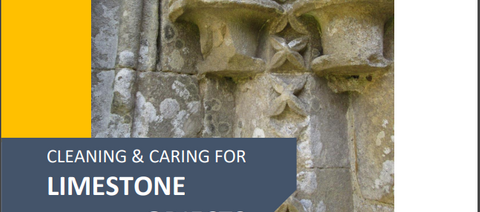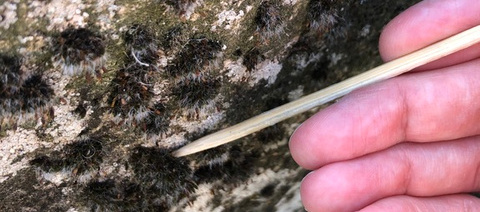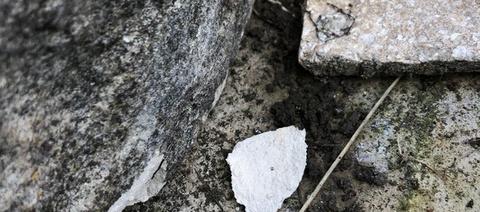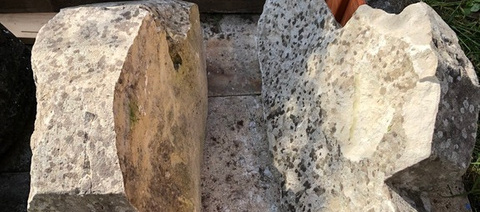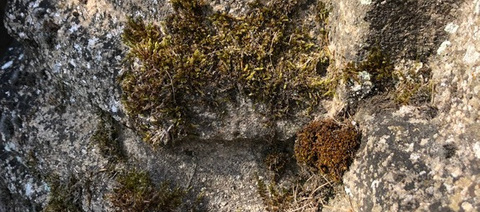Supporting local museums: Development of a guide for limestone cleaning & care
During my internship with the University of Cambridge Museums I developed a guide on cleaning and caring for limestone objects to support small, local museums. The guide describes good practices in limestone object cleaning. It outlines how limestone objects can deteriorate and it aids in the decision making on whether an object needs cleaning, to what extent, and what technique might be appropriate. The guide also gives advice for the storage and exhibition of limestone objects. Additionally, it includes information on where to get further help and support.
What was the goal the project set out to achieve?
As part of their conservation work, the University of Cambridge Museums (UCM) consortium not only provides collections care and conservation support to the University museums, but also to independent local museums in Cambridgeshire and Peterborough. Deborah Walton is UCM’s Regional Conservation Officer. In her role she had been contacted by several local museums around Cambridge seeking advice on cleaning some of the limestone objects in their collections. As a conservation student at UCM, I had the chance to support her with this task.
The conservation and collections care work at the local museums is mainly conducted by volunteers, most of them with a profession outside of the museum field and little - if any - knowledge on stone cleaning. The volunteers are usually supervised by local authority staff, custodians, or museum staff. All museums run on a budget and materials available are limited to basic cleaning utensils like tab water, water hoses, scrubbing brushes, brooms, etc.
Cleaning techniques proposed therefore had to be safe to the objects as limestone is easily scratched and can suffer severely if overexposed to water or commercial cleaning products. I also wanted the methods to be inexpensive, simple, and practicable.
Furthermore, the guide had to target those responsible for decision making as well as those conducting the cleaning. It was therefore decided to aim the main part of the guideline to the decision-makers and to add a short and practical handout version for the volunteers at the end.
What did I do?
Due to the Covid-19 lockdown and restrictions in Winter and Spring 2020/21, it was not possible to visit any of the museums in person and to conduct a detailed assessment of the objects and the museums.
To gain an understanding about the local museums’ limitations and ways of working, I interviewed UCM’s Regional Conservation Officer, Deborah Walton, as well as the persons overseeing the volunteer work at two of the local museums.
To make the guideline understandable by non-professionals, I consulted with Helena Jaeschke who has over 17 years of experience in advising local museums in her role as Conservation Development Officer at the South West Museum Development Programme.
The content of the guide was then based on literature review on limestone conservation, on advice given by D. Walton and H. Jaeschke, as well as on personal experiences gathered during a visit to one of the museums in June 2021 where I had the chance to test some of the dry-cleaning methods.
Finally, the guideline was reviewed by two professional conservators as well as three non-professionals to ensure that the content is accurate and understandable by the target audience.
What was the outcome?
The outcome is a handbook with theoretical background information on factors contributing to the deterioration of limestone, reasons for cleaning or not cleaning limestone, possible risks to objects and personnel, an overview of materials, time, and staff resources needed as well as advice on storage and display conditions. It is intended primarily for the decision-makers, while a short ‘How-To’ guide for those conducting the cleaning can be found at the end of the document. It gives practical advice and recommendations on how to clean the stones and what to look out for while doing so.
Paying due regard to the fact that in most cases the addresses of the guideline are not scientifically trained in the field of conservation, and thus might not be familiar with academic terminology usually utilised in documents of this nature, an important aspect in the process of compiling the guideline was to find a way that makes the content accessible to the reader. Therefore, the tonality was kept in everyday language using common phrases and terms, and it directly addresses the reader. Where unavoidable, explanations of technical vocabulary are provided. Comparisons to everyday examples are given where possible. The content in parts has been illustrated with images and links to videos that offer a visual impression of the described content (e.g. a video about how to roll cotton swabs over a surface, or an image of how to use wooden sticks to level moss off a stone surface).
Furthermore, short information boxes review important aspects of each section, and a 'Do's and Don'ts' list summarises the points on dry- and wet-cleaning. This allows for the addressees to easily revise and refresh relevant content, and for those with limited time to gather the most important aspects.
What did I learn?
Not only did I learn a lot about limestone object conservation, but the project also gave me some valuable insights into how local museums are run, and that the challenges they face can be very different from those of large museums.
A lot of buildings, architectural features, and objects in and around Cambridge have historically been made of limestone as it was readily available and relatively easy to quarry and to carve. But limestone is a rather soft, porous, and easily damaged material that can pose difficult challenges to museums and conservators.

